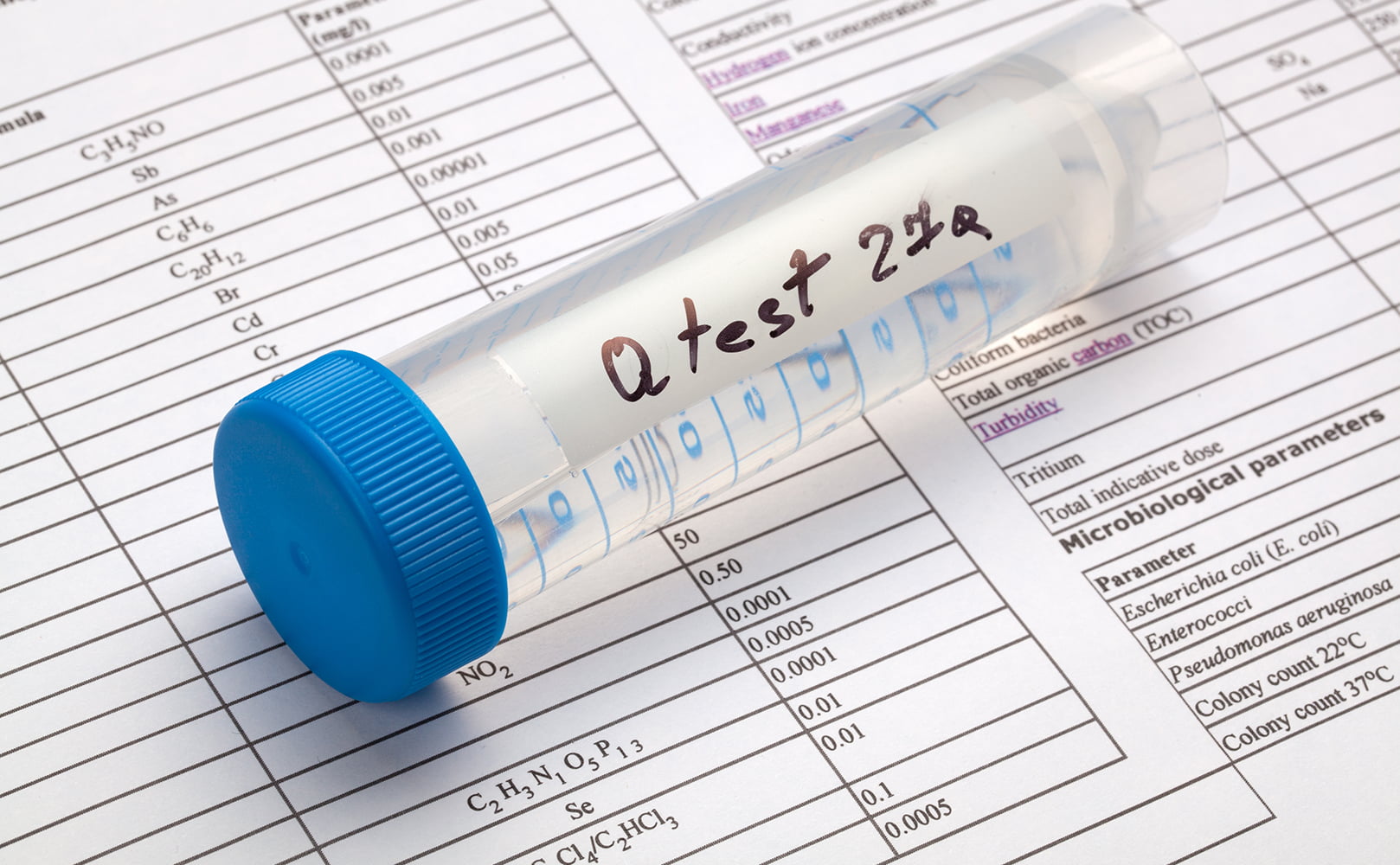Does Reverse Osmosis Remove Glyphosate from Water?
Written by: Gene Fitzgerald // Last Updated: May 10, 2023
This page may contain affiliate links. If you buy a product or service through such a link we earn a commission at no extra cost to you. Learn more.
Glyphosate – the primary ingredient in the popular herbicide Roundup – is a hotly contentious topic both in terms of its agricultural use and possible health effects on humans. An increasing amount of research now points to glyphosate posing significant health risks, which is why its use is coming under increased scrutiny both in the US and internationally.
Concern over glyphosate in drinking water might leave you wondering how to remove it from your home’s water supply.
Let’s take a look at the effectiveness of reverse osmosis filtration in removing glyphosate from water!
Key Takeaways
- Reverse osmosis is a highly effective means of removing glyphosate from water.
- As RO systems use a combination of multiple pre and post-filters in addition to the RO membrane, the effectiveness of glyphosate removal increases.
- An RO membrane alone with its ultra-fine pores will remove somewhere between 84% and 99% of glyphosate.
- A reverse osmosis system will remove up to 99% or more of glyphosate.
Does Reverse Osmosis Remove Glyphosate from Water?
So, does reverse osmosis remove glyphosate from water?
Yes, reverse osmosis does remove glyphosate from water. And reverse osmosis systems are even more effective than an RO membrane alone! That’s thanks to the various pre and post-filters that such systems use:
Typically, reverse osmosis systems use both a sediment pre-filter and an activated carbon pre-filter + post-filter before feed water reaches the RO membrane.
- The sediment pre-filter is designed to remove sand, silt, dirt, and turbidity from water to protect the later stages. The process of removing turbidity has the benefit of removing glyphosate, too – studies have shown some particle filters can remove 70% to 90% of glyphosate.
- The activated carbon pre-filter is mainly used to remove chlorine and chloramine – common by-products of municipal water treatment which can damage the RO membrane. However, they will also remove up to 92% of glyphosate, making them a crucial part of the overall filtering process. Plus, there is usually one carbon post-filter in every RO system.
- Lastly, the RO membrane itself will remove glyphosate. Studies show it will remove somewhere between 84% and 99%.
To What Percentage Does a Reverse Osmosis System Remove Glyphosate?
When you combine all three RO system filter stages, you’re looking at somewhere in the range of 99% total glyphosate removal. This makes RO systems one of the most effective methods of removing glyphosate from drinking water.
What Is Glyphosate and How Does It Enter Our Water Supplies?
Glyphosate is the main ingredient in the herbicide Roundup. Roundup is a highly effective herbicide used to kill a variety of weeds and grasses and is used extensively throughout the agricultural industry in the US and worldwide.
The stuff is so widely used, that it’s actually the most commonly used herbicide in the US. Many crops grown in the US are even genetically modified to tolerate the use of Roundup – and are so-called “roundup-ready”.
Unfortunately, due to agricultural runoff from farming, glyphosate is now found in many freshwater lakes, streams, and rivers. This is especially an issue in areas with elevated agricultural activity.
The chemical seeps into the soil after being used as an agricultural herbicide, where it binds with soil particles. Because glyphosate remains in the environment for long periods (up to 300 days in dim environments), it can lay dormant in soil and then reappear from soil erosion or rain.
If your water is municipally supplied, then there’s a chance glyphosate is filtered out as part of the treatment process. On the other hand, if your water is supplied by a well, then the odds of glyphosate contamination are higher.
Health Concerns
There is currently significant research being done on the health risks associated with Roundup use. While conclusive evidence of glyphosate’s health effects is still being studied, there is a significant indication that glyphosate is a major concern when it comes to several diseases including the following:
- Birth defects
- Liver and kidney damage
- DNA damage
- Reproductive toxicity
- Neurotoxicity
- Lowered digestive function due to a decline in beneficial gut bacteria
The US EPA states that glyphosate doesn’t pose any risk to human health from current usage levels. They also state that glyphosate isn’t an endocrine disruptor.
These claims are somewhat difficult to take at face value though, as the IARC (International Agency for Research and Cancer) has stated that glyphosate is “probably carcinogenic to humans”. In addition, a federal appeals court has recently ruled that EPA must reassess the cancer risks of glyphosate/Roundup use.
Cancer
While Monsanto – the manufacturer of Roundup – claims that the herbicide doesn’t cause cancer, there is significant reason to believe this is not the case.
For one, the IARC’s (part of the world health organization) classification of glyphosate as a group 2A chemical – meaning it’s “probably carcinogenic”. Additionally, a recent University of Washington study found that exposure to glyphosate raised the risk of Non-Hodgkin Lymphoma by 41%.
Toxicity
The EPA has established an MCL (maximum contaminant level) of 700 ppb (parts per billion) for glyphosate in drinking water. Other states have their own safety standards, including Minnesota with a ppb of 500, Wisconsin with a ppb of 10,000, and California with a ppb of 5.
While it was once believed that glyphosate was non-bio-accumulative in humans, current evidence now points to the opposite. This means that the chemical may build up to toxic levels in our bodies over time.
More Health Effects
Animal studies have demonstrated developmental effects from glyphosate ingestion, including lowered infant body weight and skeletal changes. Changes to the salivary glands and gastrointestinal tract were also noted.
Some studies showed increased levels of cancer, while others did not. Those that did used higher levels of glyphosate than people might be exposed to through environmental exposure.
Is There a Safe Level of Glyphosate in Drinking Water?
The precise safety threshold for glyphosate in drinking water is a contentious topic. As mentioned previously, the EPA defines the upper limit as 700 ppb, while other countries have lower maximum acceptable concentrations (MACs).
Canada, for example, has an MAC of 280 ppb, while the European Union sets the limit at 100 ppb. The EU is also currently conducting a risk-assessment on the use of glyphosate and may elect to ban the use of the herbicide altogether.
How You Can Test Your Home Water for Glyphosate
To deal with glyphosate in your drinking water, you’ll want to have your water professionally tested by a certified laboratory. At-home test kits for glyphosate are also available, although professional testing will give you a more accurate reading than test kits will.
What Other Filtration Methods Remove Glyphosate from Water?
There are several different ways to remove glyphosate from water besides reverse osmosis.
Chlorination and Ozonation
Both chlorine and ozone are commonly used as disinfection agents in water treatment facilities, as they work as oxidative agents. They can break down a range of water contaminants including microbial contaminants. Both are also able to break down glyphosate nonenzymatically through oxidization.
Water Distillation
Distillation is a highly effective means of removing glyphosate and other pesticides/herbicides from drinking water. Some studies show it removes 99.9%.
The basic premise behind water distillation is that water is boiled until it evaporates. The vapor then travels down a cooling corridor where it condenses and collects in a separate chamber. As the large majority of contaminants have higher boiling and evaporation points than water, they are left in the original chamber while the new chamber contains ultra-pure distilled water.
Nanofiltration
Another effective means of removing glyphosate from water is using nanofiltration. Nanofiltration is somewhat similar to reverse osmosis, although it’s not quite as effective.
The process uses a filter with a pore size of just 0.01-0.001 microns which feed water is forced through – trapping contaminants like bacteria, viruses, protozoa, pesticides, and herbicides.
These filters are less common in at-home units, due to their high cost. They remove somewhere in the neighborhood of 94% of glyphosate and other herbicides/pesticides from water.
Activated Carbon
Activated carbon filters will remove a large percentage of glyphosate from drinking water, although the precise figure will depend on the type of carbon filter you’re dealing with.
The filtration process works through adsorption, in which the tiny pores in the carbon media trap contaminant particles – removing them from your drinking water.
Activated carbon can remove somewhere between 82% and 99% of glyphosate depending on the filter used.
Does Boiling Water Remove Glyphosate?
Boiling water does not remove glyphosate or any other pesticide or herbicide for that matter. Glyphosate has a high melting and decomposition point, higher than water’s, which means boiling water will only serve to increase the concentration of glyphosate by evaporating some of the water.
Boiling water is used to kill disease-causing pathogens like bacteria, viruses, and parasites, but it’s ineffective against non-organic contaminants.
If you have any thoughts about the question, does reverse osmosis remove glyphosate, please don’t hesitate to leave a comment below!
Information provided on BOS is for educational purposes only. The products and services we review may not be right for your individual circumstances.
We adhere to strict editorial guidelines. Rest assured, the opinions expressed have not been provided, reviewed, or otherwise endorsed by our partners – they are unbiased, independent, and the author’s alone. Our licensed experts fact-check all content for accuracy. It is accurate as of the date posted and to the best of our knowledge.



